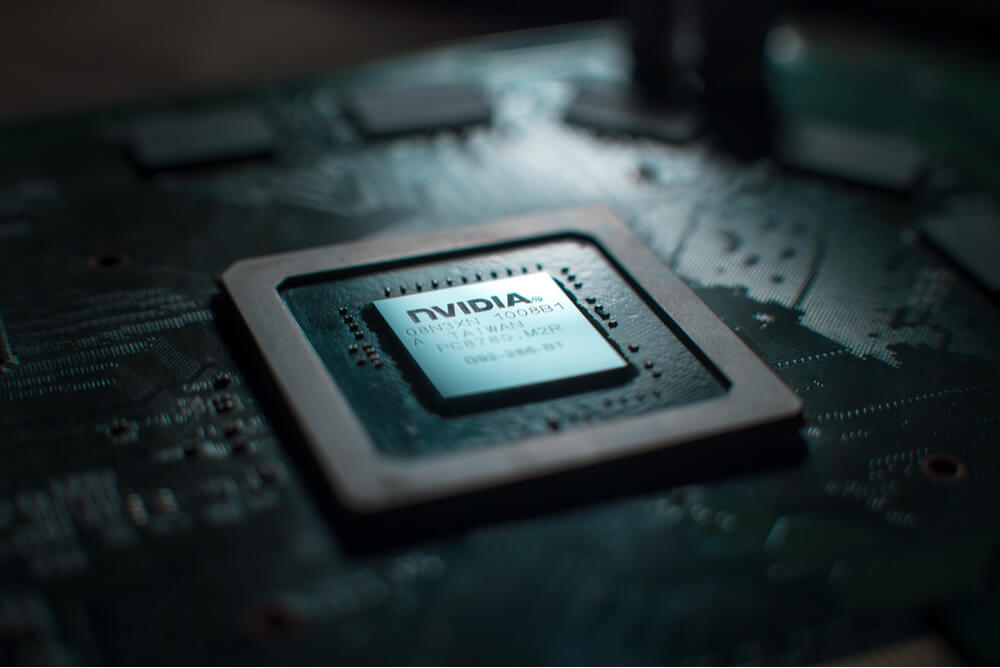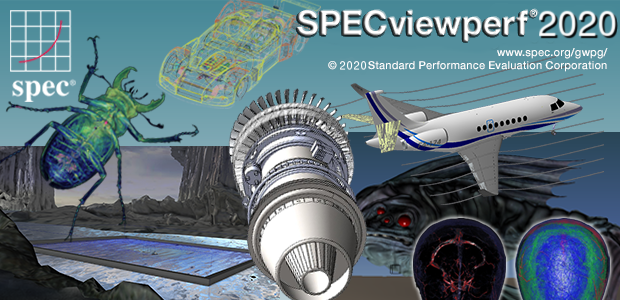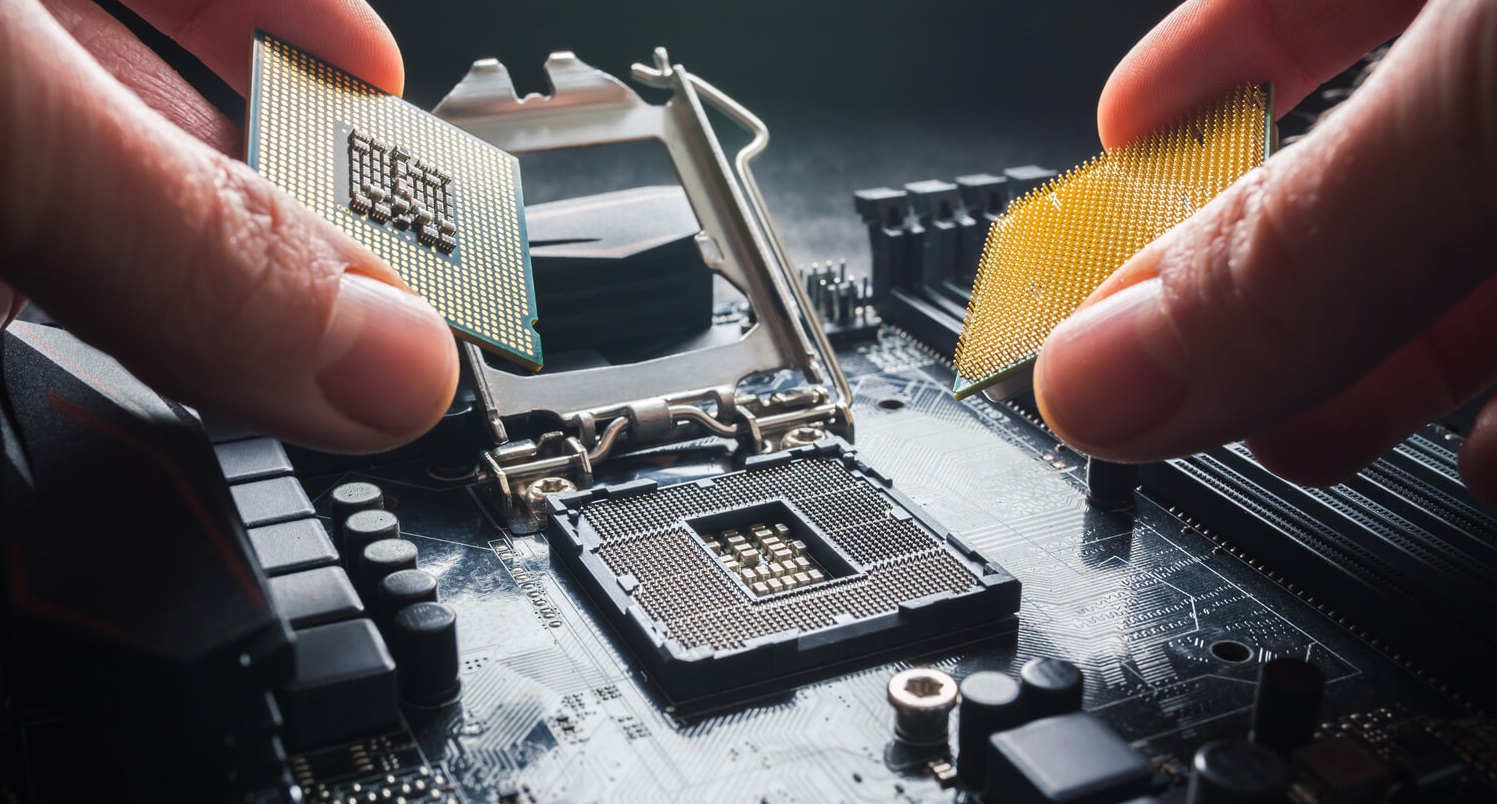Editor’s note: If you need to sell your cpus, submit a quote and we’ll get you a purchase offer within 1 business day.
*Here at exIT, we have no vested interest in which data center processors you buy. As a result, this article is completely impartial.
In this article we’ll review recent developments in data center CPU tech, resources to help guide buying decisions, and appealing contenders for the most common CPU use cases.
Current Leaders and Underdogs of Data Center Processors
Below is a graphical representation of one of the most recent benchmarking tests run on current-gen processors. While the Intel Xeon and AMD Epyc results are within the realm of expectation, the new Ampere ARM contender and Apple’s new chip are certainly standouts.

Intel and AMD – Still Neck and Neck
This should come as no surprise to anyone who has been following the data center CPU sphere for a while, but AMD and Intel continue to trade wins with each successive generation. In some use cases, AMD comes out ahead, while Intel wins in others.
For example, a general benchmark, the high-performance conjugate gradients (HPCG) benchmark, shows AMD with a modest lead.
However, a molecular modeling benchmark of a light-sensitive receptor protein shows Intel comfortably in the lead.
In some cases, per core licensing, costs can be a deterrent for AMD CPU adoption. In other cases, sometimes the comparison is between a single-socket AMD CPU vs a dual-socket Intel CPU where per core licensing costs aren’t substantially different in any case.
Otherwise, if the environment is not Windows or equivalent where per-core licensing is not an issue, the barrier isn’t relevant.
Another issue though is live migration between Intel and AMD clusters.
For many organizations, it’s cost prohibitive to buy a substantial chunk of hardware to switch all at once.
However, live migration difficulties are not an AMD problem at their core (no pun intended), they’re a software problem. The same issue could arise between Intel generations.
| CPU List |
| AMD EPYC 7F72 |
| AMD EPYC 7402P |
| AMD EPYC 7452 |
| AMD EPYC 7552 |
| AMD EPYC 7702 |
| AMD EPYC 7F52 |
| AMD EPYC 7282 |
| AMD EPYC 7542 |
| AMD EPYC 7702P |
| AMD EPYC 7272 |
| AMD EPYC 7302 |
| AMD EPYC 7302P |
| AMD EPYC 7F32 |
| AMD EPYC 7642 |
| AMD EPYC 7262 |
| AMD Radeon VII |
| AMD EPYC 7742 |
| AMD EPYC 7232P |
| AMD EPYC 7252 |
| AMD EPYC 7402 |
| AMD EPYC 7502P |
| AMD EPYC 7352 |
| AMD EPYC 7502 |
| Xeon Silver 4210 |
| Xeon Gold 5218N |
| Xeon Gold 5217 |
| Intel Xeon Gold 6234 Processor |
| Xeon Bronze 3206R |
| Intel Xeon Gold 6244 Processor |
| Intel Xeon Gold 6254 Processor |
| Xeon Gold 6230R |
| Xeon Gold 6328H |
| Intel® Xeon® Gold 6240L Processor |
| Intel Xeon Silver 4214 Processor |
| Intel Xeon Platinum 8256 Processor |
| Intel Xeon Gold 6252N Processor |
| Xeon Gold 6230 |
| Intel Xeon Gold 6222V Processor |
| Intel Xeon Platinum 8276 Processor |
| Xeon Gold 6328HL |
| Intel Xeon Gold 6226R Processor |
| Xeon Gold 5218 |
| Intel Xeon Silver 4214Y Processor |
| Xeon Platinum 8353H |
| Xeon Platinum 8376H |
| Intel Xeon Platinum 9222 Processor |
| Intel Xeon Bronze 3206R Processor |
| Intel Xeon Platinum 9242 Processor |
| Intel Xeon Gold 5217 Processor |
| Intel Xeon Silver 4210T Processor |
| Intel Xeon Gold 6248 Processor |
| Intel Xeon Platinum 9282 Processor |
| Intel Xeon Platinum 8380H CPUs |
| Intel Xeon Silver 4209T Processor |
| Intel Xeon Platinum 8253 Processor |
| Xeon Platinum 8260M |
| Xeon Gold 6226R |
| Intel Xeon Gold 6226 Processor |
| Intel Xeon Platinum 8260 Processor |
| Intel Xeon Gold 6240 Processor |
| Intel Xeon Gold 5222 Processor |
| Xeon Gold 5215 |
| Intel Xeon Gold 5220R Processor |
| Intel® Xeon® Gold 6238T Processor |
| Intel Xeon Gold 6240L Processor |
| Intel Xeon Gold 6258R Processor |
| Intel Xeon Platinum 8280 Processor |
| Intel Xeon Silver 4214R Processor |
| Intel Xeon Silver 4210R Processor |
| Intel Xeon Gold 5215 Processor |
| Intel Xeon Gold 5220T Processor |
| Xeon Gold 6230T |
| Intel Xeon Gold 6242 Processor |
| Intel Xeon Gold 5220S Processor |
| Xeon Silver 4216 |
| Xeon Gold 5320H |
| Intel Xeon Platinum 8280L Processor |
| Xeon Gold 5220S |
| Intel Xeon Gold 5218T Processor |
| Intel Xeon Gold 6242R Processor |
| Intel Xeon Gold 6209U Processor |
| Intel Xeon Gold 6240R Processor |
| Intel Xeon Gold 6208U Processor |
| Intel Xeon Gold 5218N Processor |
| Intel Xeon Gold 5220 Processor |
| Intel Xeon Silver 4216 Processor |
| Intel Xeon Gold 6240Y Processor |
| Intel Xeon Gold 6246 Processor |
| Xeon Gold 5220 |
| Xeon Gold 6348H |
| Intel Xeon Gold 6256 Processor |
| Xeon Platinum 8354H |
| Intel® Xeon® Gold 6240R Processor |
| Xeon Silver 4214 |
| Intel Xeon Gold 6230N Processor |
| Intel Xeon Gold 6238L Processor |
| Xeon Platinum 8380HL |
| Intel Xeon Platinum 8268 Processor |
| Intel® Xeon® Bronze 3204 Processor |
| Intel Xeon Gold 6262V Processor |
| Intel Xeon Gold 6250L Processor |
| Intel Xeon Platinum 8276L Processor |
| Intel Xeon Gold 6246R Processor |
| Intel® Xeon® Gold 6226 Processor |
| Xeon Silver 4215 |
| Intel Xeon Gold 6248R Processor |
| Xeon Gold 5222 |
| Intel Xeon Gold 5218B Processor |
| Xeon Gold 5215L |
| Intel Xeon Gold 5215L Processor |
| Intel Xeon Gold 5218R Processor |
| Xeon Gold 5218R |
| Xeon Platinum 8376HL |
| Intel Xeon Silver 4208 Processor |
| Intel Xeon Silver 4215 Processor |
| Intel Xeon Gold 6238 Processor |
| Intel Xeon Gold 6230R Processor |
| Xeon Gold 5218B |
| Xeon Platinum 8280M |
| Xeon Gold 6212U |
| Intel Xeon Gold 5218 Processor |
| Intel Xeon Gold 6230T Processor |
| Xeon Gold 5318H |
| Intel Xeon Platinum 8260Y Processor |
| Xeon Gold 5218T |
| Intel Xeon Platinum 9221 Processor |
| Intel Xeon Gold 6238T Processor |
| Intel Xeon Gold 6230 Processor |
| Intel® Xeon® Gold 6238R Processor |
| Intel® Xeon® Gold 6240 Processor |
| Intel Xeon Gold 6250 Processor |
| Xeon Gold 6238L |
| Intel Xeon Silver 4215R Processor |
| Intel Xeon Gold 6212U Processor |
| Intel Xeon Gold 6238R Processor |
| Xeon Gold 6234 |
| Intel Xeon Platinum 8260L Processor |
| Xeon Gold 5220R |
| Intel Xeon Gold 6210U Processor |
| Intel Xeon Gold 6252 Processor |
| Intel Xeon Platinum 8270 Processor |
| Intel® Xeon® Platinum 9282 Processor |
| Xeon Gold 6208U |
Ampere: ARM Data Center Processors

Even if Ampere’s new Altra chips are promising, even AMD had a long road to gain data center industry buy-in.
They’re an unknown entity in terms of longevity within the data center. The industry doesn’t know how reliable they are. It’s not certain how they’ll fit into the data center ecosystem. The roadmap and their scalability aren’t established either.
With that said, with an up and coming company that has no market share, any new deal is a boon.
Small inroads as forward thinkers adopt their hardware slowly may be enough to help them continue improving,
And Ampere will need to improve significantly, because the technology’s performance and sentiment for ARM architectures are the only two major points of appeal for the hardware.
If the TCO and performance improvements are astounding, it could make enough of a difference for companies to disregard vendor support or consider switching environments.
Apple

Apple’s only really taken one step into the data center CPU industry, but what a step it was. In terms of single-threaded performance, their M1 ARM chip is confidently challenging the performance of any x86 CPU.
Single-thread performance is an especially meaningful battlefield to win for a few reasons. For one, single-thread performance was handily the territory of the x86 CPU.
Multi-threaded workloads are also increasingly becoming the purview of multi-purpose GPUs or specialized AI accelerator chips.
Further, with how developers are working now, the landscape has shifted towards more single-threaded workloads. Backends are made using containers or micro-services to be stateless, more horizontally-scalable, and non-blocking, E.G. react.js or node.js.
Enterprises won’t necessarily have a great deal of motivation to adopt ARM as their data center CPUs, but developers working with ARM Apple computers will be clamoring for ARM servers to work with before long.
Nvidia
It’s hard to predict what Nvidia will do now that it’s acquired ARM.
ARM’s business was in licensing, not manufacturing. Nvidia claims that they will honor the business’s prior operations and relationships. In any case, their acquisition will help them make more strides into IoT, edge computing, and other areas previously the purview of Intel and AMD.
ARM’s previous licensing agreements with Apple, Samsung, Intel, etc may change how these corporations source their chip designs.

Resources For Current Data Center Processor Information
Openbenchmarking.org
Openbenchmarking is an invaluable resource for evaluating data center CPU performance.
Whether you want to run simple performance checks like video encoding or linux compilation, machine learning via a chess engine, or HPC via massively parallel molecular simulations, the site has a test you can run.
There are new benchmarks being created all the time, and a good way to keep an ear to the ground on CPU hardware is to check the “latest results” pages for any posted results from data center or enterprise benchmarks.
Anandtech

If you’re looking for details, Dr. Ian Cutress over at Anandtech does great work covering the CPU industry. In CPU comparison articles, they review hardware specifications, prices, release dates, and other typical information you would expect.
Additionally, they will do pieces investigating the performance of one or several processors according to various benchmarks.
While the focus is not traditionally on enterprise or data center chips, there are many analyses of workstation CPUs and ECC chips in general.
They also cover industry events like announcements from the big CPU companies.
Spec.org

The typical CPU benchmarking sites unfortunately cater to gaming PCs, not servers or workstations. Spec.org on the other hand posts submissions from enterprises of their self-reported benchmarking data.
There are a number of algorithms used, and the benchmarks are taken from a wide variety of hardware environments. If you need specific data, you can filter by many fields, such as vendor, system, OS, CPU, parallelization, etc.
You can also use a configurable query form that has many more fields and lets you customize displays.
If you prefer to work with the data in a raw format, you can also export it easily.
Phoronix.com
Phoronix reviews a wide range of hardware, but they’re particularly focused on the Linux environment. Naturally, this means they have a helpful focus on enterprise hardware, and frequently release benchmarks and news of data center processors.
They also cover news of recent developments in the open-source industry like patches and OS updates.
As stated in the introduction, if you need to sell data center hardware, simply get in contact below.



